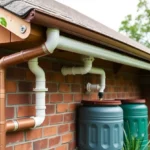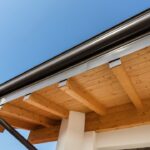Understanding Roof Purlins and Their Importance
When it comes to constructing a roof, ensuring proper support for the structural components is crucial. Especially, knowing how to support roof purlins effectively can make a tremendous difference in the longevity and stability of your home. Roof purlins are horizontal beams that support the roof deck and the loads applied to it, playing a vital role in maintaining structural integrity.

What Are Roof Purlins?
Roof purlins are essential elements in roof construction, running perpendicular to the rafters in metal and traditional wood roofing systems. Their primary purpose is to provide intermediate support for roof coverings, allowing a broader span for the rafters.
The Benefits of Using Roof Purlins
There are several advantages to incorporating purlins in your roofing framework:
- Enhanced Stability: They distribute load evenly across the roof, minimizing stress on other structural elements.
- Flexibility: Allows for the use of lighter framing materials, which can reduce overall construction costs.
- Versatility: Adaptable to various roofing designs and materials.
The Basics of Supporting Roof Purlins
Key Considerations
Understanding how to support roof purlins involves considering several factors:
- Material: Choose materials that can withstand environmental conditions and support your roof type.
- Load Bearing Capacity: Ensure the purlin’s size and material can handle the expected loads.
- Installation Technique: Proper placement and securing methods are essential to prevent structural issues.
Common Methods to Support Purlins
There are several approved methods that homeowners and builders use to reinforce purlins:
Purlin Bracing
This method involves the addition of diagonal braces to prevent purlins from sagging or shifting.
Using Strong Backs
A strong back is a reinforced support placed adjacent to the purlin for added stiffness and strength.
Metal Straps and Brackets
Utilizing metal straps and brackets can secure purlins to the rafters, providing extra support angles.
Ceiling Joists Interaction
Interconnecting with ceiling joists can enhance load distribution across roof purlins.
Choosing the Right Material for Roof Purlins
Key Options
The choice of material largely impacts the performance of your roof. Common materials include:
Wood
A traditional choice, offering ease of use and availability but requiring proper treatment to resist weathering.
Steel
Known for its strength and durability, steel is often chosen for longer spans and higher load capacities.
Aluminum
This material offers a balance of strength, weight, and resistance to corrosion, ideal for various climates.
Installation Guidance and Best Practices
Preparing for Installation
Before installation, consider the specific requirements of your roof design and environment for optimal results.
Measurement and Alignment
Accurate measurements and alignment ensure even support and aesthetic consistency.
Securing Purlins
Use appropriate fasteners and fixing techniques based on your chosen purlin material and roofing structure.
Understanding Load Factors
Supporting your roof purlins effectively requires an understanding of load dynamics. These include dead loads from the roofs weight and live loads from wind, snow, or maintenance activities.
Calculating Loads
Its vital to calculate the loads your purlins will support and choose corresponding materials and supports that can safely bear these loads.
Solutions for Common Challenges
Addressing Deflection Issues
Purlin deflection can occur over time due to prolonged stress, leading to potential structural risks. Counteract this by adjusting materials or reinforcing supported areas.
Corrosion Prevention
If using metal purlins, apply protective coatings or use corrosion-resistant materials to extend lifespan.
Conclusion: Ensuring Safe and Stable Roof Purlins
Ensuring the proper support of roof purlins is essential to maintaining the integrity and longevity of your home’s structural framework. By choosing the correct materials and applying informed bracing techniques, your roof system will remain secure and reliable for years to come.
Related Guides
External Resources

Frequently Asked Questions
Why are roof purlins necessary?
Purlins provide critical support for roofing materials, spreading out weight and helping prevent structural collapse.
How can I prevent purlin corrosion?
Using corrosion-resistant materials or applying protective coatings can help shield purlins from environmental damage.
What factors influence the choice of purlin material?
The decision depends on factors such as load requirements, weather conditions, and cost considerations.
This article contains affiliate links. We may earn a commission at no extra cost to you.








